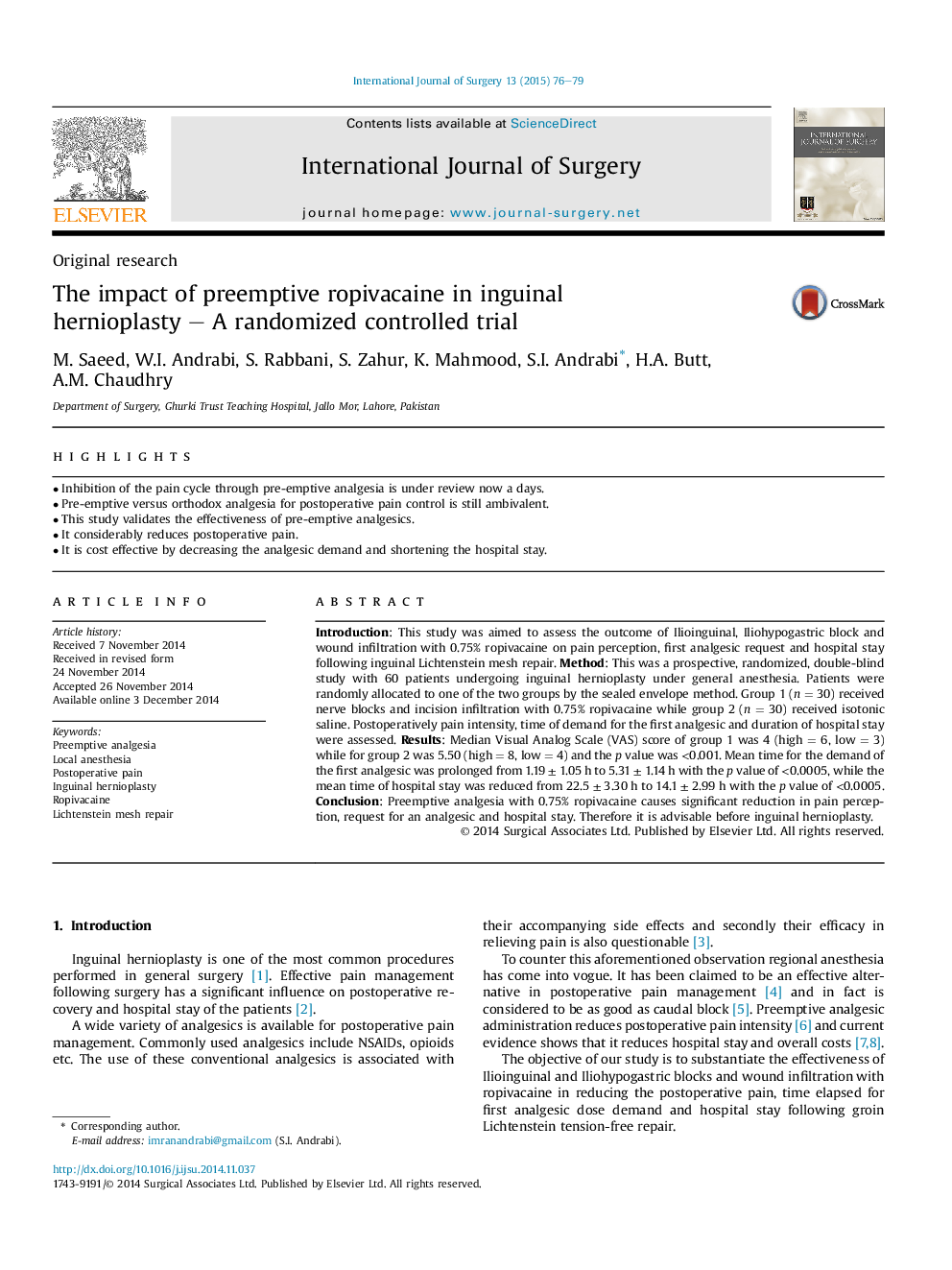| Article ID | Journal | Published Year | Pages | File Type |
|---|---|---|---|---|
| 6251551 | International Journal of Surgery | 2015 | 4 Pages |
â¢Inhibition of the pain cycle through pre-emptive analgesia is under review now a days.â¢Pre-emptive versus orthodox analgesia for postoperative pain control is still ambivalent.â¢This study validates the effectiveness of pre-emptive analgesics.â¢It considerably reduces postoperative pain.â¢It is cost effective by decreasing the analgesic demand and shortening the hospital stay.
Introduction: This study was aimed to assess the outcome of Ilioinguinal, Iliohypogastric block and wound infiltration with 0.75% ropivacaine on pain perception, first analgesic request and hospital stay following inguinal Lichtenstein mesh repair. Method: This was a prospective, randomized, double-blind study with 60 patients undergoing inguinal hernioplasty under general anesthesia. Patients were randomly allocated to one of the two groups by the sealed envelope method. Group 1 (n = 30) received nerve blocks and incision infiltration with 0.75% ropivacaine while group 2 (n = 30) received isotonic saline. Postoperatively pain intensity, time of demand for the first analgesic and duration of hospital stay were assessed. Results: Median Visual Analog Scale (VAS) score of group 1 was 4 (high = 6, low = 3) while for group 2 was 5.50 (high = 8, low = 4) and the p value was <0.001. Mean time for the demand of the first analgesic was prolonged from 1.19 ± 1.05 h to 5.31 ± 1.14 h with the p value of <0.0005, while the mean time of hospital stay was reduced from 22.5 ± 3.30 h to 14.1 ± 2.99 h with the p value of <0.0005. Conclusion: Preemptive analgesia with 0.75% ropivacaine causes significant reduction in pain perception, request for an analgesic and hospital stay. Therefore it is advisable before inguinal hernioplasty.
